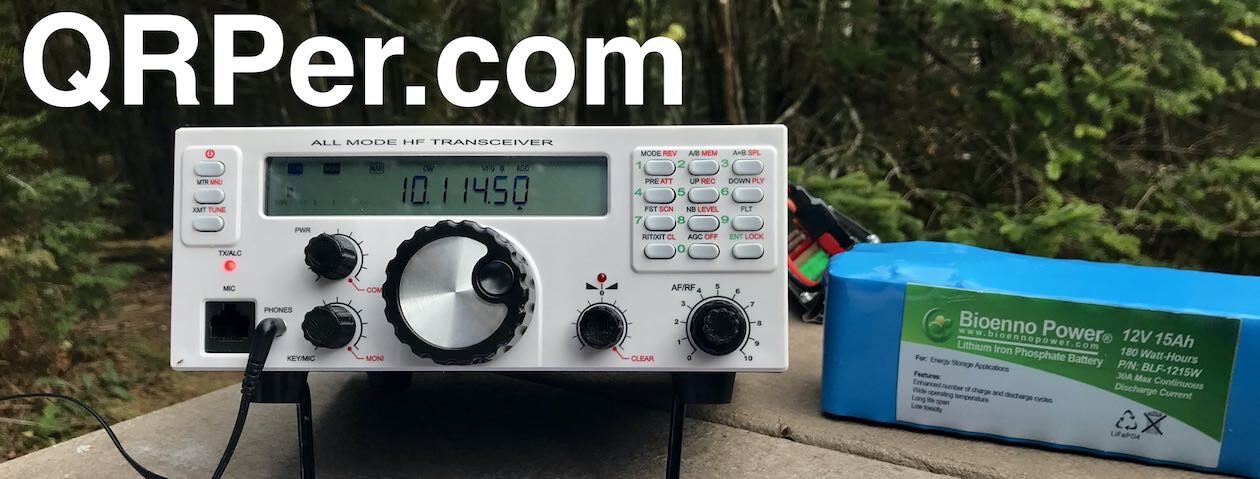It’s a question as old as time itself:
“What radio should I take on vacation?”
This month, we’re heading out for a short vacation, and while I think I’ve already answered this question for myself, it’s always fun to explore the possibilities a bit further.
As you probably know, I’ve accumulated a fair number of QRP radios over the years—so many, in fact, that it’s borderline embarrassing. When people ask me how many radios I own, I tend to dodge the question. It feels a bit like admitting to an addiction! It’s the same feeling I get after the holidays when I finally total up how much I spent on gifts. Sometimes, it’s better not to know the number.
Less is more

I told a friend recently that I’d honestly be content with just one radio from my collection.
I know that might sound surprising, especially since QRPer.com often showcases my radio “addiction.” But the truth is, aside from radios, backpacks, and books, I don’t accumulate many things. We intentionally live in a small house (by American standards), and we like to keep it uncluttered.
That said, most of the radios in my collection are ones I genuinely enjoy using. Any one of them could be my only radio, and I’d be happy. So choosing one radio for a vacation should be easy, right?
Not quite.
Almost every time I face this decision—“Which one should I take?”—a couple of radios consistently rise to the top of the list. I’ll share those choices in a moment, but I’d love to hear your thoughts: would you make the same choices, or would you pick something else?
Vacation Parameters
 Before diving into my choices, here are a few details about this particular vacation:
Before diving into my choices, here are a few details about this particular vacation:
- It’s short—just four nights.
- I haven’t been to this area in 17 years. (The destination is a surprise for my daughters, so I’m keeping it under wraps for now!)
- This is a road trip. Since our beloved Subaru is out of commission and not yet replaced, we’ll be taking our Volvo C40, which has much less cargo space.
- With four people and Hazel (our dog), the trunk/boot will be crammed. I won’t be able to squirrel away extra radios like I’ve been known to do on longer trips.
- I’ll likely only have time for two POTA activations. The focus of this trip is family time, so any activations will be short.
- I’ve never visited the POTA sites we’ll likely visit, so I don’t know if wire antennas are allowed or what the conditions will be. One site is a historic/archeological area, so I’ll need a low-impact setup.
The Contenders
Given the tight space and limited time, I’ll only bring one radio. It needs to be versatile enough to handle unknown conditions and compact enough to fit with our packed gear.
The Mountain Toper MTR-3B
It’s hard to beat the MTR-3B for size. This ultra-compact, lightweight, self-contained kit is both impact and waterproof.
However, it lacks an internal ATU, so I’d be limited to wire antennas. Since I won’t have room for my MC-750 vertical, I’d need to rely on finding parks that allow wires in trees. I could call ahead to confirm, but this adds complexity.
The Penntek TR-45L.
The TR-45L is an excellent choice. It has a large internal battery that can easily handle 10 activations, an internal manual ATU, brilliant audio, and it’s nearly self-contained. Add a key and almost any antenna, and you’re good to go.
I’ve even used the AX1 antenna with the TR-45L, for low-impact setups. But like the MTR-3B, it’s CW-only, which eliminates SSB as an option. It’s also a bit larger than my other QRP radios, and I need to prioritize space.
It would also be nice to have a radio small enough to fit on my folding kneeboard.
The Elecraft KX3
The KX3 is an incredibly capable radio. It handles SSB, CW, and even digital modes like PSK-31 and RTTY without extra gear. It has an excellent internal ATU and pairs beautifully with the AX1 or a simple wire antenna. It’s small enough to fit on my folding kneeboard, too.
That said, there’s one radio that offers nearly the same capability as the KX3 but is even smaller and has an internal battery:
The Elecraft KX2
The KX2 is my go-to travel radio. It’s compact, versatile, and so capable it feels like the Swiss Army Knife of QRP radios.
Every time I travel, I try to talk myself out of bringing the KX2 just to mix things up, but it’s hard to argue with its convenience and reliability. For this trip, where time and space are limited, the KX2 is the clear winner.
I’ll pair it with a random wire antenna, the AX1, and a minimalist throw-line kit. This setup will allow me to adapt quickly to park conditions, even if wires aren’t permitted.
What about the KH1, Thomas?
Okay, I may sneak a second radio onto this trip.
The KH1 is so compact it can fit in my Pelican M40 case, which slides under the seat or into the glove compartment.
It’s my EDC radio, and I like having it on hand for impromptu pedestrian-mobile fun or when I want to work a friend who’s activating a park on the other side of the continent. Who knows?
What do you think?

While I know I could make any radio in my arsenal work, the KX2 takes the guesswork out of the equation. When time is limited, that means more time on the air!
Would you choose the KX2 for this mini-vacation, or do you think another radio would be better suited for the job? Please comment.























































